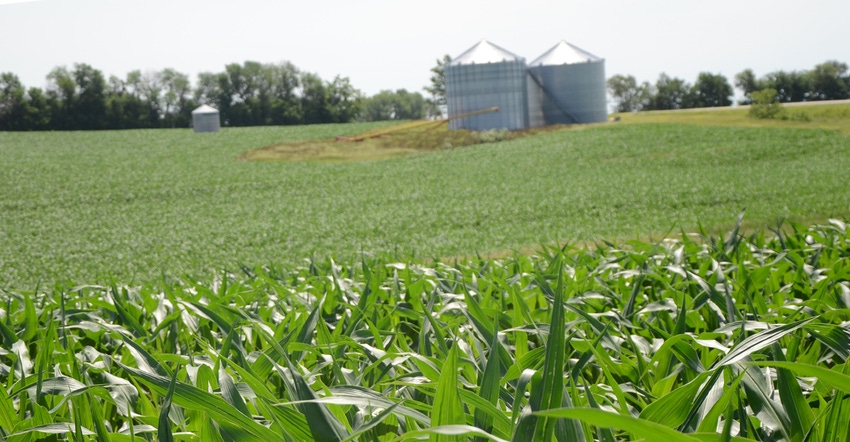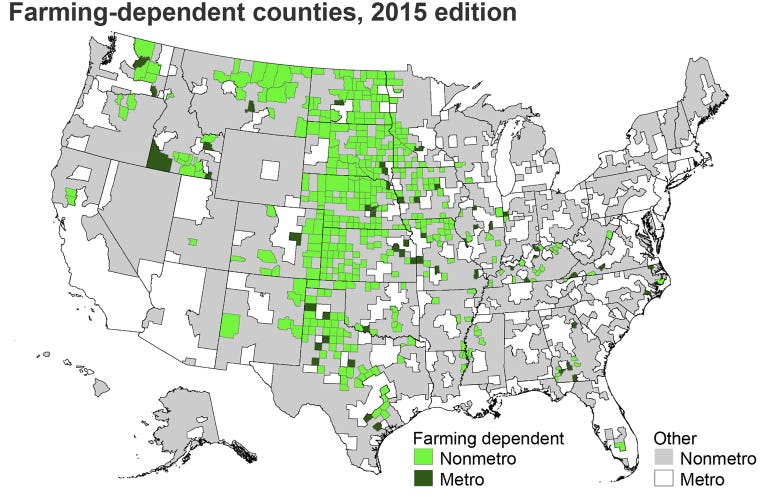November 6, 2020

A recent report released from the University of Nebraska-Lincoln confirms the significance and the impact of agriculture on the state of Nebraska. The report, prepared by colleagues in the Department of Agricultural Economics and the Bureau of Business Research at UNL, analyzes the economic impact of Nebraska agriculture and the broader agribusiness sector.
The report demonstrates that the broader agricultural sector is responsible for more than one-fifth of Nebraska's gross state product and nearly one-fourth of the state's jobs. Using 2017 agricultural production and sales data from the Census of Agriculture along with economic data for other sectors, the economic impact of the broader ag sector was estimated using the IMPLAN model.
The economic input-output model measures direct effects of economic output in one sector (such as production agriculture). as well as indirect or multiplier effects when activity in one sector drives increased activity in another sector (such as Main Street commerce).
The production ag sector was estimated to provide $4.6 billion from the crop sector and $5.4 billion from the livestock sector for a total of $10 billion of economic value added to the state's economy through direct and multiplier effects.
The ag manufacturing sector provided an additional $11 billion from numerous segments, including food animal slaughter and processing, ag pharmaceuticals and biologic products (included seed production), and farm machinery and equipment among others.
Ag transportation and wholesale activity was estimated at $4.4 billion, including farm supply and merchandising, as well as ag components of the state's major railroads, trucking companies, and equipment dealers.
Of significantly smaller scale, but not irrelevant, is the state's growing agritourism industry, with an estimated impact of $80 million. The combined impact of about $25.7 billion represented 23.6% of the state's $119 billion economy in 2017.
Conservative estimates
Those estimates are conservative given the analysis was based on the year 2017. While 2017 was chosen to use the most compete agricultural data available from the latest Census of Agriculture, it was a year in which aggregate Nebraska farm income was only $2.2 billion, according to USDA Economic Research Service estimates.
That was the bottom of the downturn in net farm income since the record highs of 2011 and 2013. ERS has estimated a solid rebound in Nebraska farm income since, up to $4.2 billion in 2019, recognizing that some of the increase has come from increased government payments instead of market returns.
My own ongoing analysis suggests even higher farm income for 2020 at nearly $6 billion, given current estimates of more than $2 billion in government payments for agriculture in Nebraska (including commodity and conservation programs, as well as trade, disaster and COVID-19 relief).

FARMING-DEPENDENT: Farming-dependent counties are defined as those where 25% or more of the county's annual labor and proprietor's earnings were derived from farming, or 16% or more of jobs were in farming.

Altogether, the higher farm income levels since 2017 would increase the economic contribution agriculture makes to the state through proprietor income and multiplier effects of farm household spending. That could add a few percentage points to the gross state product estimates (almost $4 billion in a $120 billion state economy as of 2017).
The reason that the increasing farm income levels would not have an even greater impact is, in fact, an important strength of the Nebraska agricultural sector. As noted above, the ag-related manufacturing, transportation and wholesale sectors play a substantial role in the impact of agriculture on the state's economy. Those sectors benefit from a strong ag production sector, but they also largely depend on volume and overall economic activity.
Nebraska's ag sector is resilient, with farms and ranches producing more than $20 billion in ag output each year through the past decade, even as farm income fluctuated and fell to the low of just over $2 billion in 2017. That continued output helps keep the rest of the ag sector in business, and helps keep the broader ag economy and its impact on the state more stable.
Unparalleled impact
The impact of the Nebraska ag sector on the state's overall economy is generally unparalleled by other states. Only North Dakota and South Dakota show agriculture to be a larger share of their respective state economies, and they are both less than half the size of Nebraska's economy.
The fact that agriculture and the broader ag sector are so much more important to Nebraska than in almost any other state also is reflected in additional data from USDA on what are called farming-dependent counties. based on the farm share of income or employment in the county.
Farming-dependent counties once spanned the nation but have gradually shrunk in numbers as the local economy grew and diversified or the ag sector declined. Even as the number of farming-dependent counties has declined nationwide, the remaining farming-dependent counties are concentrated in the Great Plains, from Texas up to North Dakota and Montana, including right here in Nebraska, where more than half of Nebraska's 93 counties remain farming-dependent.
That dependence on agriculture, the resiliency of the ag sector, and the diversified ag-related sector also are all important reasons that Nebraska's economy fared relatively better than other states during both the Great Recession of 2008-09 and the current downturn related to the COVID-19 pandemic.
Continued production and output from the sector, including many "essential" businesses, provided economic stability and protection against the worst of the economic challenges. That also means that the Nebraska economy would be expected to grow at a slower rate than other states' economies once the pandemic is over, if only for the fact that it didn't contract as much as other states during the downturn.
With many uncertainties heading into the new year, the economic outlook for agriculture may be uncertain. But we can depend on production agriculture and the ag-related industries across the state to continue producing and providing a solid foundation for the state's economy in the year ahead and beyond.
For those interested in further information, the ag economic impact report from UNL is available at agecon.unl.edu/agimpact. The county typology data and maps from USDA's Economic Research Service are available at ers.usda.gov.
Lubben is an Extension policy specialist at the University of Nebraska-Lincoln.
About the Author(s)
You May Also Like






